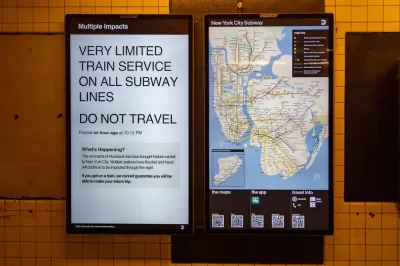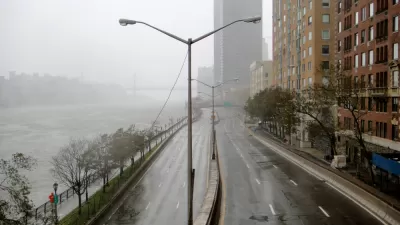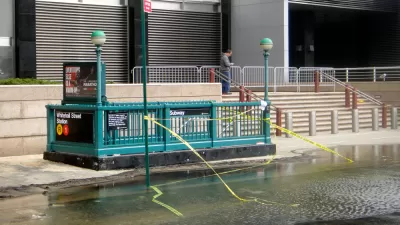The city of New York has a new mandate for resilience planning.

The New York City Council responded to the havoc wreaked by Hurricane Ida by requiring the city to make a comprehensive plan for climate resilience.
The City Council's vote will "step up pressure" on the city's government to honor promises made after Superstorm Sandy that failed to protect the city from the ravages of a storm that made landfall on the Gulf Coast in an around New Orleans, according to an article by Anne Barnard.
As noted by Barnard, the new legislation shifts the focus of previous resilience planning programs on Lower Manhattan to prioritize resilience at the neighborhood level: "The legislation also seeks to remedy years of concerns that slow-moving plans to protect Lower Manhattan’s Financial District have eclipsed equally urgent needs in working-class neighborhoods, like those in Queens and Brooklyn where people died in last month’s flash floods caused by remnants of Hurricane Ida."
"The Big U" plan approved after Sandy would have built a 10-mile U-shaped barrier from 57th Street on the west side, down the battery and up the east side to 42nd Street, according to an article picked up by Planetizen in October 2017, but quickly ran out of momentum.
Since then, the city did draft and approve a zoning rewrite to build more resilience measures into the built environment along the city's 520 miles of coastline.
The source article linked below includes numerous soundbites from local experts and advocates discussing the benefits and shortcomings of the new bill.
FULL STORY: Ida Flooding Deaths Push Council to Demand Climate Change Plan for New York

Planetizen Federal Action Tracker
A weekly monitor of how Trump’s orders and actions are impacting planners and planning in America.

San Francisco's School District Spent $105M To Build Affordable Housing for Teachers — And That's Just the Beginning
SFUSD joins a growing list of school districts using their land holdings to address housing affordability challenges faced by their own employees.

The Tiny, Adorable $7,000 Car Turning Japan Onto EVs
The single seat Mibot charges from a regular plug as quickly as an iPad, and is about half the price of an average EV.

Seattle's Plan for Adopting Driverless Cars
Equity, safety, accessibility and affordability are front of mind as the city prepares for robotaxis and other autonomous vehicles.

As Trump Phases Out FEMA, Is It Time to Flee the Floodplains?
With less federal funding available for disaster relief efforts, the need to relocate at-risk communities is more urgent than ever.

With Protected Lanes, 460% More People Commute by Bike
For those needing more ammo, more data proving what we already knew is here.
Urban Design for Planners 1: Software Tools
This six-course series explores essential urban design concepts using open source software and equips planners with the tools they need to participate fully in the urban design process.
Planning for Universal Design
Learn the tools for implementing Universal Design in planning regulations.
Smith Gee Studio
City of Charlotte
City of Camden Redevelopment Agency
City of Astoria
Transportation Research & Education Center (TREC) at Portland State University
US High Speed Rail Association
City of Camden Redevelopment Agency
Municipality of Princeton (NJ)





























